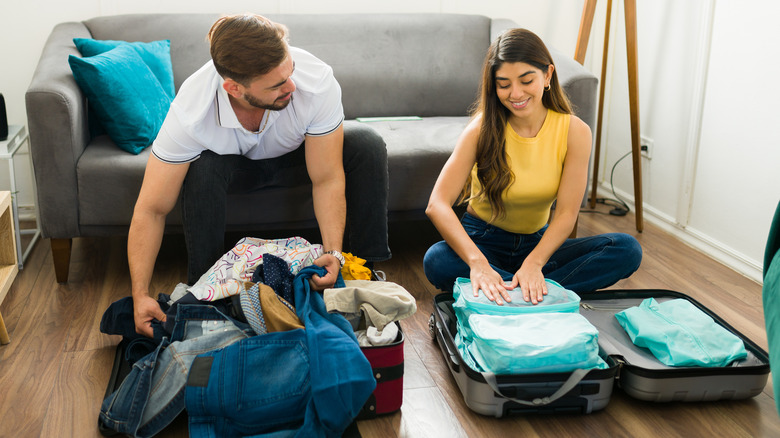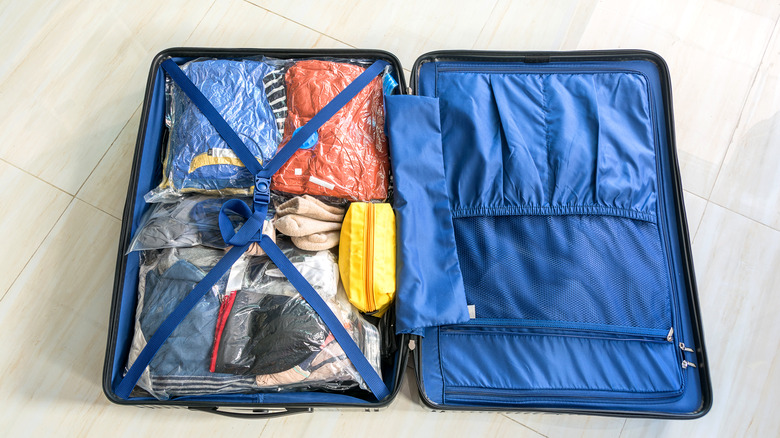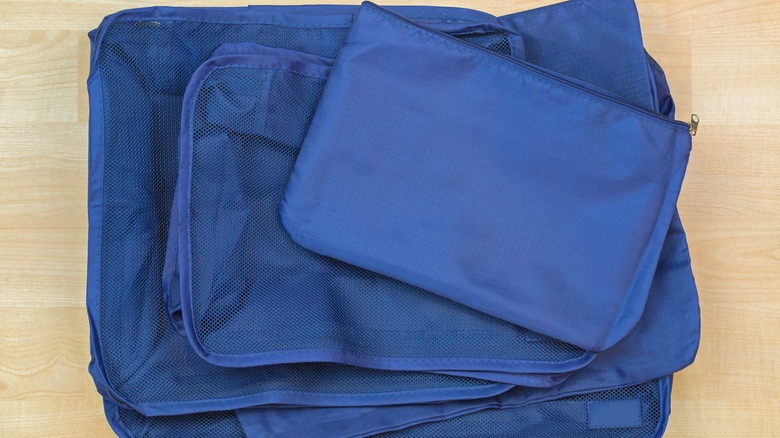What's Better Than Compression Bags And Packing Cubes? Compression Cubes
Optimizing space and artfully organizing are the two pillars of successful trip packing. All of the packing tips and hacks you'll find revolve around space, organization, and organizing to make more space. Whether you're packing for a year-long backpacking journey or a long weekend with friends, your ability to effectively pack will dictate what you're able to take.
Over the years, travel companies have introduced a number of gadgets and luggage designs to assist our goals of optimizing and organizing. Some of these items and designs have proven to be more effective than others, but packing cubes and compression bags have stood the test of time.
While a majority of travelers still rely on the "stuff bag, travel, unstuff bag" method of travel packing, frequent and long-term travelers know that every inch of available space is precious real estate. While packing cubes help to organize your stuff (which may also optimize space), compression bags create more space by removing air. However, both packing cubes and compression bags have their limitations. Fortunately, compression cubes provide the pack-tastic benefits of both.
Limitations of packing cubes and compression bags
Packing cubes are used mainly for organizing your stuff. You can place your t-shirts with your t-shirts, sweaters with your sweater, etc. Most come in a mesh fabric, which provides breathability and allows you to see what you're grabbing. If you know how to fold things, packing cubes can also keep your clothes pretty wrinkle-free. However, besides minimizing the size of bulky sweatshirts and allowing for Tetris-type spacial arrangement, packing cubes don't do much for space conservation.
Compression bags, on the other hand, are excellent at creating more space, allowing you to pack more stuff (for better or worse). Compression bags tend to look like giant Ziploc bags. You place your folded clothes inside the bag, roll the bag to push out all the air, then seal the bag to create an airless vacuum. Some compression bags also come with a pump for removing air or require a vacuum cleaner to suck the air out. Unlike packing cubes, however, compression bags can cause clothes to wrinkle. While you travel, your clothes stay locked into their wrinkly, vacuum-packed state of creases.
Invest in compression cubes for carry-ons
Combining the organizational function of packing cubes with the space-saving science of compression bags, compression cubes are the travel gear birth of two good ideas. While compression cubes look similar to packing cubes, the game-changing design of compression cubes is its second zipper.
First, you pack compression cubes and zip up the bag as you would a regular packing cube. However, if you want to create additional space in your luggage, you then zip up the additional zipper, which will compact your clothes even further. Instead of squeezing air out to create more space, you leverage the force of the additional zipper to squeeze everything as tightly as possible. While a compression bag may compact your clothes more effectively, a compression cube will help you avoid the wrinkles often associated with vacuum-sealed bags.
As the cost of checking bags continues to rise, compression cubes are an awesome way to stick solely to carry-on luggage. Not only can you recoup your compression cube investment after one bagless flight, you'll save enough to warrant buying another must-pack sweater.


